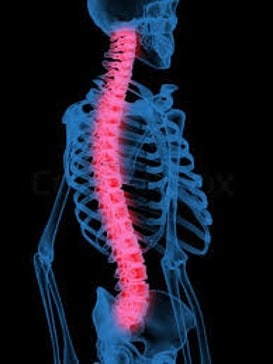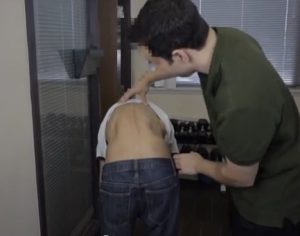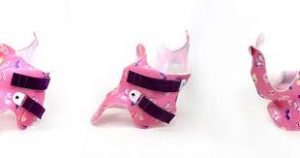I am passionate about scoliosis in children and had the amazing opportunity to work with the spinal team at the Evelina Hospital in London. They are a fantastic team and I learnt so much. I worked alongside paediatric spinal consultants in a busy clinic assessing and reviewing children with scoliosis.
What are the main types of scoliosis?
The spine can curve towards either side of the body:
- A curve in the chest area is known as a thoracic scoliosis
- In the lower part of the back is a lumbar scoliosis
- And a curve between the thoracic and lumbar spine is a thoracolumbar scoliosis.
There are four main categories of scoliosis:
- Idiopathic Scoliosis
- Congenital Scoliosis
- Neuromuscular Scoliosis
- Syndromic Scoliosis
What is a Kyphosis and Lordosis?
A kyphosis is defined by an excessive outward curve of the spine and may cause a deformity such as a humpback or hunchback.
A lordosis is defined as an excessive inward curve of the spine in which the back may appear swayback, the buttocks more prominent.
In this blog I shall focus on Idiopathic Scoliosis.
What is an idiopathic scoliosis?
Idiopathic is another word for unknown cause. In other words we don’t know why the scoliosis develops as there is no identifiable reason. Children with an idiopathic scoliosis are healthy and have no underlying condition to cause the scoliosis.
- Idiopathic scoliosis accounts for around 70 – 80% of all scoliosis.
- Idiopathic scoliosis can be early onset (before age 5 years) or late onset (after age 5 years).
- The incidence is 2 – 3 / 1000 and it can develop at anytime throughout childhood and adolescent hood.
- It is more common in girls than boys.
- It is most common to start in adolescents.
- There is a genetic connection. If a direct relative has an idiopathic scoliosis then you have a greater risk of developing one.
What are the symptoms of an idiopathic scoliosis?
The main symptom is an altered body shape. Sometimes it may be your child or yourself that will notice a change in body shape such as:
- Shape of the back (rib cage more prominent on one side than the other)
- Slouching
- Leaning to one side
- One shoulder higher than the other
- Asymmetry of the breast
- Prominent shoulder blade
- Uneven waistline
What do I do if my child or I notice some symptoms or are worried they have a curve in their spine?
I would advise you see your GP and or a physiotherapist to carry out an assessment. If it is confirmed, then it is essential that your child is sent to see a spinal consultant who will assess the curve clinically and through X rays.
Are there any restrictions to activities if my child has a diagnosed idiopathic scoliosis?
Unless specified otherwise, your child can continue with all sports and activities.
How is the scoliosis treated and measured?
- The aim is to stop the curve progressing. Growth is the main cause for the curve to progress.
- The choice of treatment depends on the age of your child, type and severity of the curve.
- The spinal consultant will carry out a clinical assessment including a Adams forward bend Test.
- If a person with a scoliosis bends forwards as shown, a clear rib bulge will be visible from behind.
- The consultant will assess how the curve is progressing through a series of x-rays of your child’s spine over time. They will measure the cobb angle to measure the curve on degrees directly from the x-ray.
- Minor degree curves (<25 degrees) may need no treatment but regular monitoring, especially as your child grows. Schroth therapy may be appropriate for you child this would need to be discussed with your medical team.
- Moderate curves (25 – 40 degrees) may need bracing to help keep the spine as straight as possible as your child grows. This may help to slow the progression of the curve. Some consultants and or physiotherapists may also recommend exercises. Schroth therapy may be appropriate for you child this would need to be discussed with your medical team.
- Severe curves (>50 degrees) are likely to require surgical correction.
What is bracing?
If your doctor recommends bracing for your child, it is likely that your child’s curve is relatively small, and your child is young. A brace only works to stop the progression of the curve in a growing child, it is not used for children who are skeletally mature.
If you have any concerns about your child’s spine please feel free to Contact us for an informal chat to ask any questions specific to your child. We have children’s physiotherapists who can assess your child if you have concerns about their spine and suspect a scoliosis. We are able to travel to Surrey, Sussex, Kent, Hampshire and parts of London – https://wanderlusttherapyforkids.com/contact/




